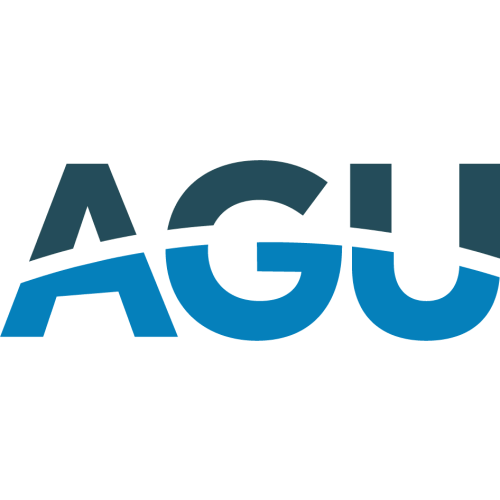Earth-Science Reviews, volume 228, pages 103996
Defrosting northern catchments: Fluvial effects of permafrost degradation
Tananayev N.I.
1, 2
,
Lotsari Eliisa S.
3
Publication type: Journal Article
Publication date: 2022-05-01
Journal:
Earth-Science Reviews
Quartile SCImago
Q1
Quartile WOS
Q1
Impact factor: 12.1
ISSN: 00128252
General Earth and Planetary Sciences
Abstract
This paper discusses the potential response of fluvial processes and landforms to the projected permafrost degradation and related hydrological change . Fluvial system structure is presented in the first section of the paper along with permafrost controls over its functioning, which vary across fluvial system compartments. The distinction is drawn between primarily fluvial landforms that are expected to adjust to future hydrology with less permafrost constraints, and primarily cryogenic landforms evolving in line with permafrost disturbances. The influence of permafrost on fluvial action varies across compartments: on hillslopes , permafrost mostly controls the occurrence of surface runoff, in river valleys and channels, sediment erodibility , while thermal interaction is essential for growing thermo-erosional gullies. Observed and projected changes in permafrost and hydrology are outlined, and their relevance for cryo-fluvial evolution of fluvial systems is reviewed. Based on these projections, future changes in fluvial action in each compartment are discussed. On hillslopes, where permafrost exerts important controls on hillslope hydrology, fluvial activity of overland flow is expected to decrease following the active layer deepening and decreased overland flow duration. In erosional networks, controlled by thermal interaction between runoff and permafrost terrain, higher water temperature is expected to increase the occurrence and rates of thermo-erosional gully development. In river valleys and channels, where permafrost controls the erodibility of bed and bank material, the expected fluvial feedbacks vary across scales and stream orders, and include changes in seasonality of channel deformations, increased retreat rates in lower river banks and decreased, in higher banks, along with floodplain subsidence , and minor potential for complete destabilization of existing channel patterns. Future collateral effects of fluvial change include alterations of terrestrial biogeochemical cycles and societal impact that must be accounted for in climate change adaptation and mitigation strategies.
Citations by journals
|
1
2
|
|
|
Hydrology and Earth System Sciences

|

Hydrology and Earth System Sciences
2 publications, 11.76%
|
|
Journal of Hydrology

|

Journal of Hydrology
2 publications, 11.76%
|
|
Journal of Geophysical Research Earth Surface

|

Journal of Geophysical Research Earth Surface
2 publications, 11.76%
|
|
Science of the Total Environment

|

Science of the Total Environment
2 publications, 11.76%
|
|
Nature Climate Change

|

Nature Climate Change
1 publication, 5.88%
|
|
Water (Switzerland)

|

Water (Switzerland)
1 publication, 5.88%
|
|
Biogeosciences

|

Biogeosciences
1 publication, 5.88%
|
|
Environmental Research Letters

|

Environmental Research Letters
1 publication, 5.88%
|
|
Geoderma

|

Geoderma
1 publication, 5.88%
|
|
Nature Communications

|

Nature Communications
1 publication, 5.88%
|
|
Land Degradation and Development

|

Land Degradation and Development
1 publication, 5.88%
|
|
Proceedings of the National Academy of Sciences of the United States of America

|

Proceedings of the National Academy of Sciences of the United States of America
1 publication, 5.88%
|
|
Remote Sensing

|

Remote Sensing
1 publication, 5.88%
|
|
1
2
|
Citations by publishers
|
1
2
3
4
5
|
|
|
Elsevier

|

Elsevier
5 publications, 29.41%
|
|
Copernicus

|

Copernicus
3 publications, 17.65%
|
|
Springer Nature

|

Springer Nature
2 publications, 11.76%
|
|
Multidisciplinary Digital Publishing Institute (MDPI)

|

Multidisciplinary Digital Publishing Institute (MDPI)
2 publications, 11.76%
|
|
American Geophysical Union

|

American Geophysical Union
2 publications, 11.76%
|
|
IOP Publishing

|

IOP Publishing
1 publication, 5.88%
|
|
Wiley

|

Wiley
1 publication, 5.88%
|
|
Proceedings of the National Academy of Sciences (PNAS)

|

Proceedings of the National Academy of Sciences (PNAS)
1 publication, 5.88%
|
|
1
2
3
4
5
|
- We do not take into account publications that without a DOI.
- Statistics recalculated only for publications connected to researchers, organizations and labs registered on the platform.
- Statistics recalculated weekly.
{"yearsCitations":{"type":"bar","data":{"show":true,"labels":[2022,2023,2024],"ids":[0,0,0],"codes":[0,0,0],"imageUrls":["","",""],"datasets":[{"label":"Citations number","data":[4,10,3],"backgroundColor":["#3B82F6","#3B82F6","#3B82F6"],"percentage":["23.53","58.82","17.65"],"barThickness":null}]},"options":{"indexAxis":"x","maintainAspectRatio":true,"scales":{"y":{"ticks":{"precision":0,"autoSkip":false,"font":{"family":"Montserrat"},"color":"#000000"}},"x":{"ticks":{"stepSize":1,"precision":0,"font":{"family":"Montserrat"},"color":"#000000"}}},"plugins":{"legend":{"position":"top","labels":{"font":{"family":"Montserrat"},"color":"#000000"}},"title":{"display":true,"text":"Citations per year","font":{"size":24,"family":"Montserrat","weight":600},"color":"#000000"}}}},"journals":{"type":"bar","data":{"show":true,"labels":["Hydrology and Earth System Sciences","Journal of Hydrology","Journal of Geophysical Research Earth Surface","Science of the Total Environment","Nature Climate Change","Water (Switzerland)","Biogeosciences","Environmental Research Letters","Geoderma","Nature Communications","Land Degradation and Development","Proceedings of the National Academy of Sciences of the United States of America","Remote Sensing"],"ids":[5858,19990,26913,2679,1814,24405,18965,11213,3193,3231,19834,306,22827],"codes":[0,0,0,0,0,0,0,0,0,0,0,0,0],"imageUrls":["\/storage\/images\/resized\/cxBZptDQQvWgQeXj5GoTXDfgUEoGVvFgpDRctnDr_medium.webp","\/storage\/images\/resized\/GDnYOu1UpMMfMMRV6Aqle4H0YLLsraeD9IP9qScG_medium.webp","\/storage\/images\/resized\/ThX4qR44RPtVIKLYDCHXdAkXoSGv8IwkLOKLlwEK_medium.webp","\/storage\/images\/resized\/GDnYOu1UpMMfMMRV6Aqle4H0YLLsraeD9IP9qScG_medium.webp","\/storage\/images\/resized\/voXLqlsvTwv5p3iMQ8Dhs95nqB4AXOG7Taj7G4ra_medium.webp","\/storage\/images\/resized\/MjH1ITP7lMYGxeqUZfkt2BnVLgjkk413jwBV97XX_medium.webp","\/storage\/images\/resized\/cxBZptDQQvWgQeXj5GoTXDfgUEoGVvFgpDRctnDr_medium.webp","\/storage\/images\/resized\/LsKy6OnmmmRGcAU6CZgWQvNiP1polbaSLNrN7zqj_medium.webp","\/storage\/images\/resized\/GDnYOu1UpMMfMMRV6Aqle4H0YLLsraeD9IP9qScG_medium.webp","\/storage\/images\/resized\/voXLqlsvTwv5p3iMQ8Dhs95nqB4AXOG7Taj7G4ra_medium.webp","\/storage\/images\/resized\/bRyGpdm98BkAUYiK1YFNpl5Z7hPu6Gd87gbIeuG3_medium.webp","\/storage\/images\/resized\/mxFdPe9qujsfvfYfcN0QOclAiYORFb0xrRlwV8gs_medium.webp","\/storage\/images\/resized\/MjH1ITP7lMYGxeqUZfkt2BnVLgjkk413jwBV97XX_medium.webp"],"datasets":[{"label":"","data":[2,2,2,2,1,1,1,1,1,1,1,1,1],"backgroundColor":["#3B82F6","#3B82F6","#3B82F6","#3B82F6","#3B82F6","#3B82F6","#3B82F6","#3B82F6","#3B82F6","#3B82F6","#3B82F6","#3B82F6","#3B82F6"],"percentage":[11.76,11.76,11.76,11.76,5.88,5.88,5.88,5.88,5.88,5.88,5.88,5.88,5.88],"barThickness":13}]},"options":{"indexAxis":"y","maintainAspectRatio":false,"scales":{"y":{"ticks":{"precision":0,"autoSkip":false,"font":{"family":"Montserrat"},"color":"#000000"}},"x":{"ticks":{"stepSize":null,"precision":0,"font":{"family":"Montserrat"},"color":"#000000"}}},"plugins":{"legend":{"position":"top","labels":{"font":{"family":"Montserrat"},"color":"#000000"}},"title":{"display":true,"text":"Journals","font":{"size":24,"family":"Montserrat","weight":600},"color":"#000000"}}}},"publishers":{"type":"bar","data":{"show":true,"labels":["Elsevier","Copernicus","Springer Nature","Multidisciplinary Digital Publishing Institute (MDPI)","American Geophysical Union","IOP Publishing","Wiley","Proceedings of the National Academy of Sciences (PNAS)"],"ids":[17,3207,8,202,2551,2075,11,162],"codes":[0,0,0,0,0,0,0,0],"imageUrls":["\/storage\/images\/resized\/GDnYOu1UpMMfMMRV6Aqle4H0YLLsraeD9IP9qScG_medium.webp","\/storage\/images\/resized\/cxBZptDQQvWgQeXj5GoTXDfgUEoGVvFgpDRctnDr_medium.webp","\/storage\/images\/resized\/voXLqlsvTwv5p3iMQ8Dhs95nqB4AXOG7Taj7G4ra_medium.webp","\/storage\/images\/resized\/MjH1ITP7lMYGxeqUZfkt2BnVLgjkk413jwBV97XX_medium.webp","\/storage\/images\/resized\/ThX4qR44RPtVIKLYDCHXdAkXoSGv8IwkLOKLlwEK_medium.webp","\/storage\/images\/resized\/LsKy6OnmmmRGcAU6CZgWQvNiP1polbaSLNrN7zqj_medium.webp","\/storage\/images\/resized\/bRyGpdm98BkAUYiK1YFNpl5Z7hPu6Gd87gbIeuG3_medium.webp","\/storage\/images\/resized\/mxFdPe9qujsfvfYfcN0QOclAiYORFb0xrRlwV8gs_medium.webp"],"datasets":[{"label":"","data":[5,3,2,2,2,1,1,1],"backgroundColor":["#3B82F6","#3B82F6","#3B82F6","#3B82F6","#3B82F6","#3B82F6","#3B82F6","#3B82F6"],"percentage":[29.41,17.65,11.76,11.76,11.76,5.88,5.88,5.88],"barThickness":13}]},"options":{"indexAxis":"y","maintainAspectRatio":false,"scales":{"y":{"ticks":{"precision":0,"autoSkip":false,"font":{"family":"Montserrat"},"color":"#000000"}},"x":{"ticks":{"stepSize":null,"precision":0,"font":{"family":"Montserrat"},"color":"#000000"}}},"plugins":{"legend":{"position":"top","labels":{"font":{"family":"Montserrat"},"color":"#000000"}},"title":{"display":true,"text":"Publishers","font":{"size":24,"family":"Montserrat","weight":600},"color":"#000000"}}}}}
Metrics
Cite this
GOST |
RIS |
BibTex
Cite this
GOST
Copy
Tananayev N., Lotsari E. S. Defrosting northern catchments: Fluvial effects of permafrost degradation // Earth-Science Reviews. 2022. Vol. 228. p. 103996.
GOST all authors (up to 50)
Copy
Tananayev N., Lotsari E. S. Defrosting northern catchments: Fluvial effects of permafrost degradation // Earth-Science Reviews. 2022. Vol. 228. p. 103996.
Cite this
RIS
Copy
TY - JOUR
DO - 10.1016/j.earscirev.2022.103996
UR - https://doi.org/10.1016%2Fj.earscirev.2022.103996
TI - Defrosting northern catchments: Fluvial effects of permafrost degradation
T2 - Earth-Science Reviews
AU - Tananayev, N.I.
AU - Lotsari, Eliisa S.
PY - 2022
DA - 2022/05/01 00:00:00
PB - Elsevier
SP - 103996
VL - 228
SN - 0012-8252
ER -
Cite this
BibTex
Copy
@article{2022_Tananayev,
author = {N.I. Tananayev and Eliisa S. Lotsari},
title = {Defrosting northern catchments: Fluvial effects of permafrost degradation},
journal = {Earth-Science Reviews},
year = {2022},
volume = {228},
publisher = {Elsevier},
month = {may},
url = {https://doi.org/10.1016%2Fj.earscirev.2022.103996},
pages = {103996},
doi = {10.1016/j.earscirev.2022.103996}
}
Profiles
